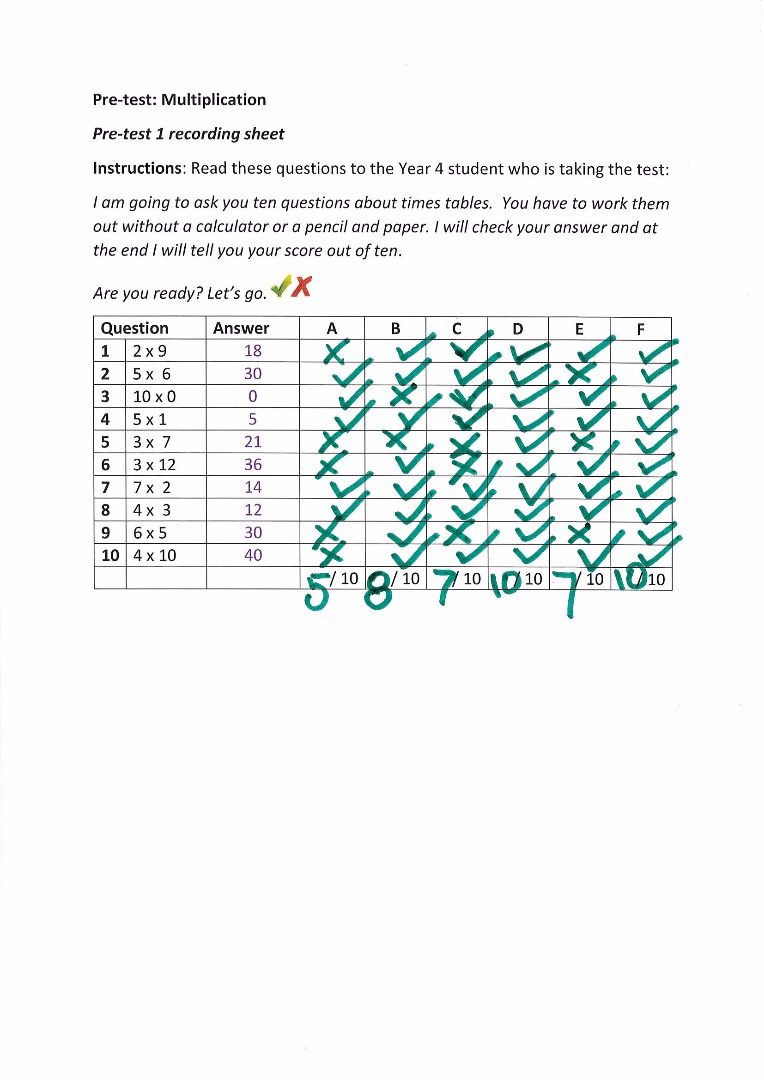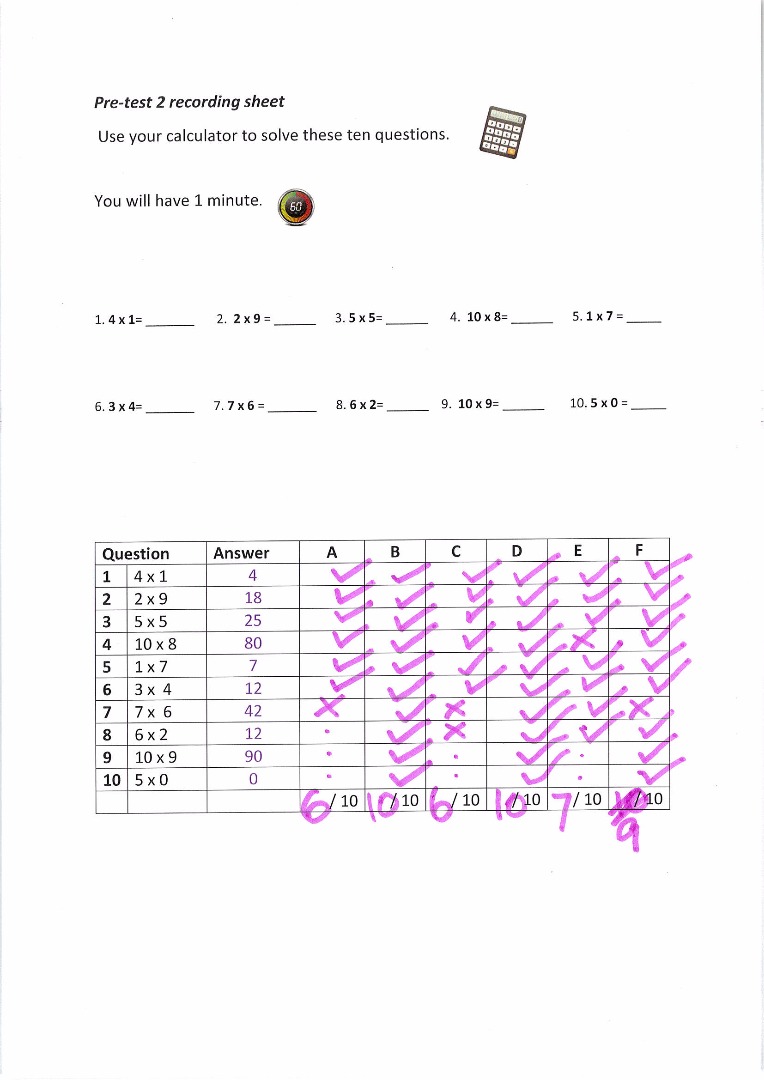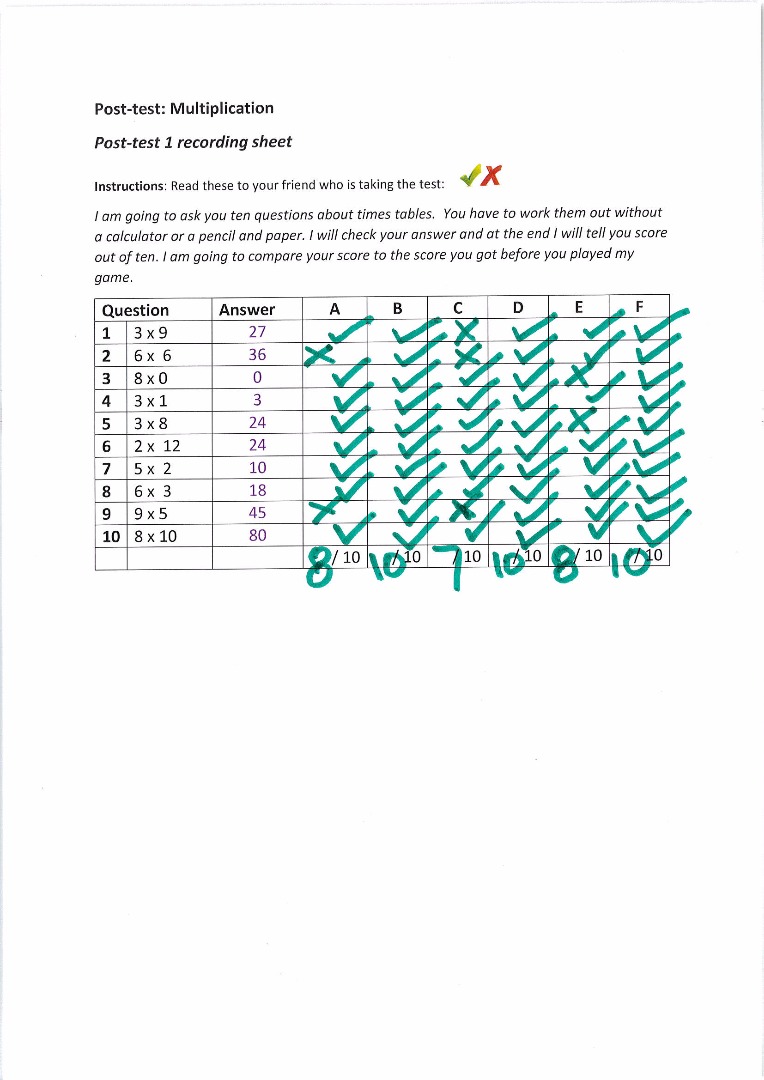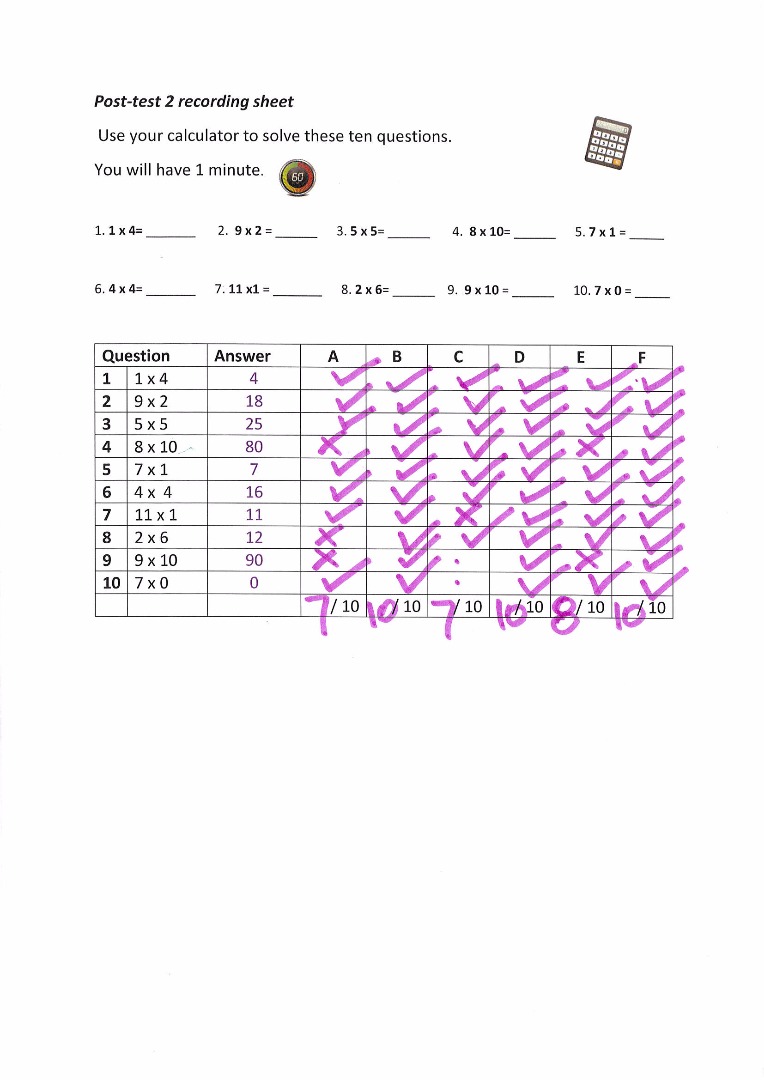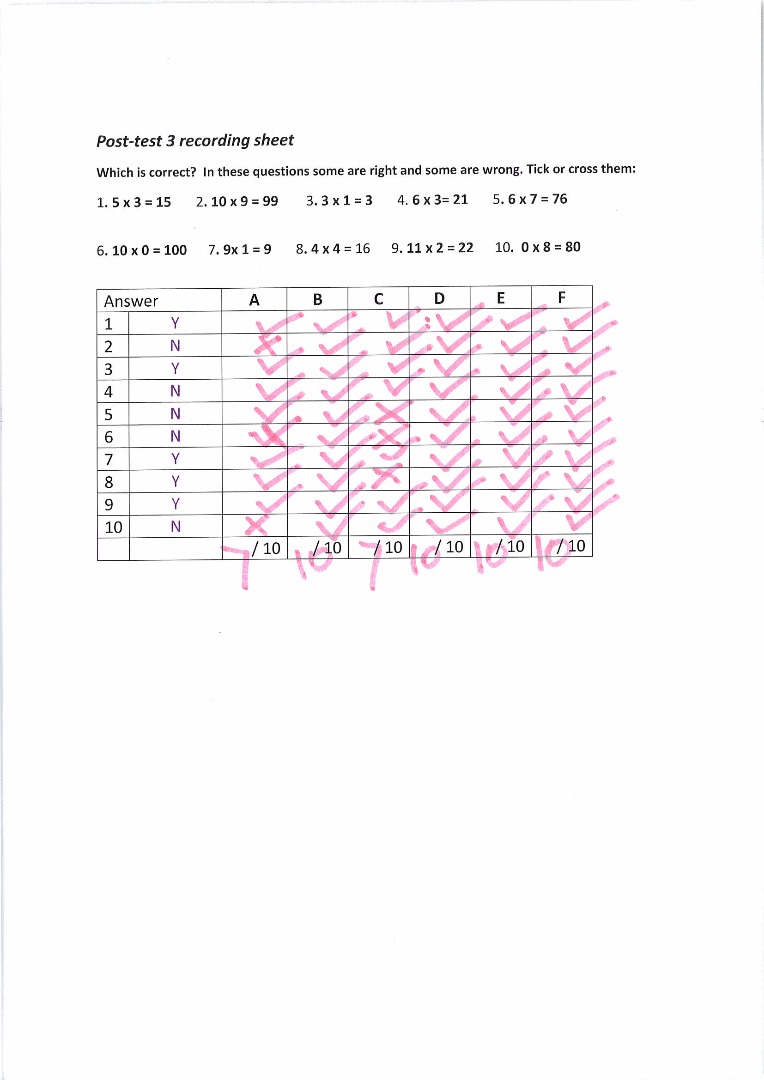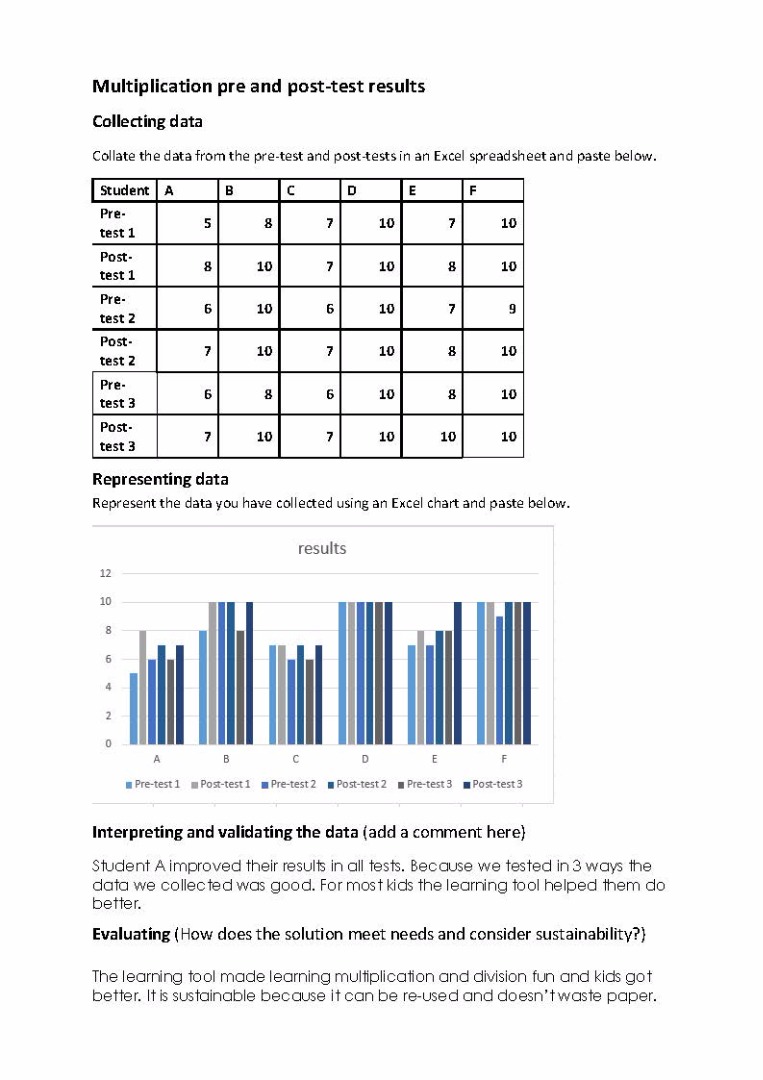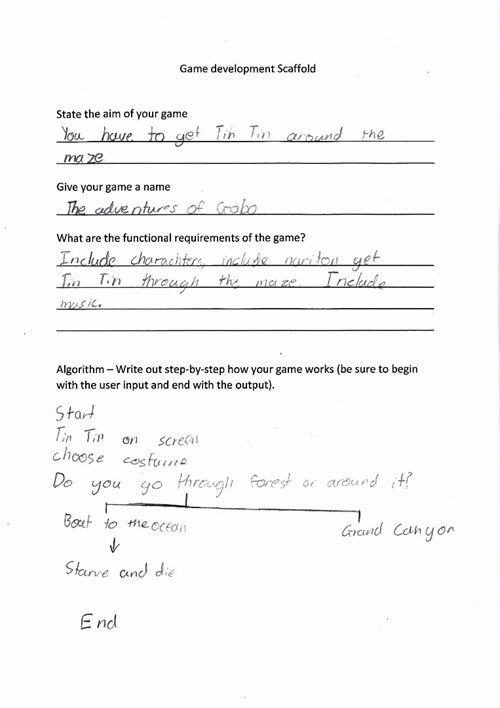Digital project: Learning tool
Summary of task
Students collaboratively designed a learning tool featuring branching and repetition. The learning tool aimed to provide opportunities for players (Year 3 and 4 students) to explore, practise and apply mathematical concepts and skills (multiplication and division). The learning tool provided opportunities for the player to work through levels. Students also collected and validated data about what the students already knew about multiplication using three simple tests before and after using the learning tool. They collated the data from six students, represented it in a graph and commented on their findings. Students evaluated the solution.
Achievement standard
By the end of Year 6, students explain how social, ethical, technical and sustainability considerations influence the design of solutions to meet a range of present and future needs. They explain how the features of technologies influence design decisions and how digital systems are connected to form networks.
Students describe a range of needs, opportunities or problems and define them in terms of functional requirements. They collect and validate data from a range of sources to assist in making judgements. Students generate and record design ideas for specified audiences using appropriate technical terms, and graphical and non-graphical representation techniques including algorithms. They plan, design, test, modify and create digital solutions that meet intended purposes including user interfaces and a visual program. Students plan and document processes and resources and safely produce designed solutions for each of the prescribed technologies contexts. They negotiate criteria for success, including sustainability considerations, and use these to judge the suitability of their ideas, solutions and processes. Students use ethical, social and technical protocols when collaborating, and creating and communicating ideas, information and solutions face-to-face and online.
